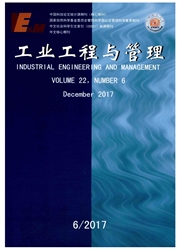

 中文摘要:
中文摘要:
在对消费者进行分类的基础上,研究了不同的废弃电器电子产品(WEEE)回收法规下制造商的回收策略选择。研究发现:1对产品再生利用敏感的消费者所占比例越高,消费者对产品的再生利用性能越敏感,制造商产品的再生利用系数越高;2回收率外生情况下,回收法规对回收率要求较低时,制造商会通过改善产品的再生利用性能增加利润,对回收率要求较高时,制造商无法通过改善产品的再生利用性能增加收益,制造商利润下降;3回收率内生情况下,制造商完全回收还是部分回收WEEE受回收收益、回收成本以及产品再生利用敏感消费者占的比例和敏感程度等因素的影响。
 英文摘要:
英文摘要:
Study the manufacturers take-back strategy choice under the different WEEE take- back legislations when the consumer is category. We can find below results: The manufacturer production's recovery performance is higher when the consumer ratio that is sensitive to the recovery performance and the consumer ~s sensitivity is higher. When the take-back rate is exogenous, the manufacturer improves the production recovery performance and the profit increases while the take-back legislation requests that the take-back rate is lower but the manufacturer can not improve the production recovery performance to increase the benefit while the take-back rate is higher,and the manufacturer's profit decrease. When the take-back rate is indigenous,the manufacturer partially or fully collects WEEE depending on the factors such as the benefit of the WEEE, the cost of collecting WEEE, the sensitive consumer ratio, the consumer's sensitivity and so on.
 同期刊论文项目
同期刊论文项目
 同项目期刊论文
同项目期刊论文
 期刊信息
期刊信息
